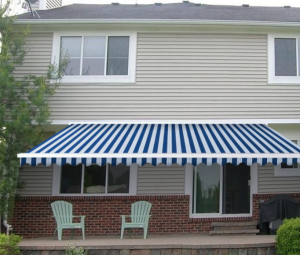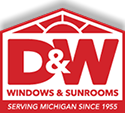 Patio awnings are becoming increasingly popular around the world because of their flexibility and mobility. Awnings are primarily used to give shade and protect against UV rays. They also protect against rain and snow, as well as fading of furnishings, carpets, and paints. Patio awnings are both decorative and functional.
Patio awnings are becoming increasingly popular around the world because of their flexibility and mobility. Awnings are primarily used to give shade and protect against UV rays. They also protect against rain and snow, as well as fading of furnishings, carpets, and paints. Patio awnings are both decorative and functional.
Even if you enjoy the heat, there are times when it is simply too hot to sit in the sun. On these hot days, you have the option of staying inside and blasting the air conditioning, or you can stay cool outside by installing an awning on your patio.
An awning provides shade over your patio to shield it from the hot summer sun. If you’re thinking about acquiring an awning, evaluate the benefits and drawbacks, such as durability, cost, and value. For an estimate, contact us at D&W Windows and Sunrooms.
The Pros
Keep a Cool Environment for You and Your Home
Awnings not only provide shade for your home’s outside, but they can also keep the interior cool. These awnings can reduce the temperature inside by up to 15 degrees, decreasing the need for air conditioning. This may result in saving energy over time.
Protect Your Home
Furniture is prone to bleaching and drying out when exposed to the sun for long periods of time. A patio awning is a great method to keep your outdoor and interior furnishings cool and protected from the sun. That means you’ll be able to spend more time in your favorite lounge chair.
Flexible
Fixed awnings have a shorter lifespan than retractable awnings. Awnings that aren’t retractable are less expensive, but they aren’t as sturdy. During storms, fixed awnings are more prone to be damaged and easily torn. During a windstorm or heavy snowfall, retractable awnings can quickly fold up to protect them.
Excellent Investment
Patio awnings keep you cool in the summer and encourage you to spend more time outside. The initial cost of a retractable patio awning is low compared to the expense of installing a roof to your deck, you’ll see a strong return on your investment. It also means spending more time with friends and family on sunny days.
Convenient
You can choose from a variety of materials for awnings, including vinyl, canvas, and water-resistant fabric. A retractable awning can also be motorized or operated manually. These awnings typically include a wind or rain sensor, timers, and remote controls, making them much more convenient to use, however they are usually more expensive.
The Cons
Installing it is costly.
The most significant disadvantage is the high initial cost of an awning. However, if you know your family will use it frequently, the expenses may be worth it, and you will likely save money on energy costs in the long term.
Maintenance and cleaning are required.
Awnings, both retractable and non-retractable, must be cleaned on a regular basis.
Your awning’s fabric will catch dirt, dust, or water after rainstorms over time. Not to mention the metal parts, which can rust or become stuck if not cleaned properly. Before your awning’s quality is damaged, it will need to be cleaned on a regular basis.
Sensor repair might be costly.
Awnings with motors are more expensive upfront, but they are more convenient. When it starts to rain, some of these types of awnings include remotes or sensors that automatically retract them.
A replacement sensor for a shattered sensor can be costly. In the meantime, you’ll have to manually control the awning until you can contact a repairman to get things back on track.
It Isn’t Suitable for All Weather Situations
Awnings are fantastic for preventing heat and sheltering your property from direct sunshine, but they aren’t ideal for big storms, snow, or rain.
Despite the fact that the retractable awning’s fabric is usually weatherproof, it could develop leaks or trap water, allowing mold to form. Ensure that any trapped water is removed and that any mold is removed on a regular basis before it causes problems.
